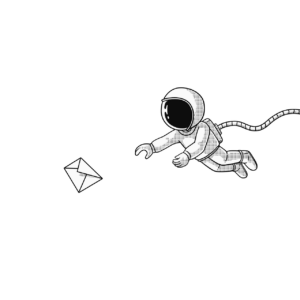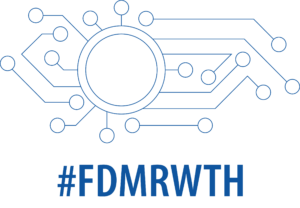
Quelle: Pixabay
Wer Forschung auf einem hohen Niveau betreiben möchte, muss sich zwangsläufig mit Forschungsdatenmanagement und digitaler Langzeitarchivierung auseinandersetzen, um möglichen Datenverlusten entgegen zu wirken. Warum FDM wichtig und insbesondere im digitalen Zeitalter einfach umzusetzen ist, möchten wir Ihnen am Fallbeispiel der NASA Sonde Voyager 1 verdeutlichen.
Weshalb man sich in der Wissenschaft mit FDM beschäftigen sollte, hat viele gute Gründe. Die Ersterhebung von Forschungsdaten bindet nicht nur wertvolle Ressourcen und Zeit, sondern kann auch sehr kostenintensiv sein. FDM hilft dabei, diese Kosten so gering wie möglich zu halten, da durch die Speicherung und Archivierung der Forschungsdaten eine Sicherung der Daten gewährleistet wird und keine neuen Kosten entstehen, falls diese abhandenkommen. Wurden die Forschungsdaten also einmal erhoben und liegen diese vor, so ist es wichtig, diese nach der guten wissenschaftlichen Praxis nachhaltig abzulegen. Dabei helfen die FAIR-Prinzipien:
F – Findable
A – Accessible
I – Interoperable
R – Resuable
Forschungsdaten sollten leicht auffindbar, zugänglich, interoperabel und wiederverwendbar sein. Somit lässt sich teure Doppelarbeit sparen und Datenverlust vermeiden. Mithilfe der Langzeitarchivierung (LZA) können Forschungsdaten und die langfristige Nachnutzung dieser über einen langen Zeitraum sichergestellt und gewährleistet werden. Die Aufbewahrungsfrist beläuft sich in vielen Fachdisziplinen mittlerweile auf zehn Jahre. In diesem Zeitraum bedarf es einer regelmäßigen Datenüberprüfung hinsichtlich der Erhaltung der Nutzbarkeit.
Das Ziel der LZA ist es, den Erhalt der Daten authentisch, integer, zugänglich und verständlich zu machen. Dazu zählen neben der Bereitstellung der technischen Infrastruktur auch organisatorische Maßnahmen und die Etablierung von Prozessen und Standards. Einen detaillierten Bericht zur digitalen Langzeitarchivierung finden Sie auf unserem FDM-Blog.
Das Worst Case Szenario
Ein erschreckendes Beispiel, was passieren kann, wenn archivierte Daten nicht mehr zugänglich sind, bietet die NASA und ihre Sonde Voyager 1. Laut heise online sendet die Sonde seit zwei Monaten fehlerhafte Daten. Was die Ursache der falschen Daten ist, bleibt bislang ungeklärt, da die technischen Dokumente zu Voyager 1 nicht mehr auffindbar sind. Grund dafür ist, dass diese Dokumente nie digital abgelegt und die Daten der mittlerweile pensionierten Ingenieurinnen und Ingenieure mit nach Hause genommen wurden. Man gehe sogar davon aus, dass die Dokumente womöglich gänzlich verloren sind.
Unsere Lösung: Coscine
Coscine (/ˈkəʊsaɪn/) steht für Collaborative Scientific Integration Environment und ist eine am IT Center der RWTH Aachen entwickelte FDM-Plattform zur kostenlosen Speicherung, Verwaltung und Archivierung von Forschungsdaten. Coscine fördert die Wahrung der guten wissenschaftlichen Praxis, indem auf verschiedenen Stationen des Forschungsdatenlebenszyklus, von der Speicherung bis zur Archivierung, die FAIR-Prinzipien implizit unterstützt werden. Dank gleichzeitig hoher technischer Sicherheit und unbeschränkten Kollaborationsmöglichkeiten, ist Coscine ein starker Partner für Forschende im täglichen Umgang mit Forschungsdaten. Im Beispiel der Voyager 1 wären die Forschungsdaten am besten in Coscine über den Research Data Storage (RDS) gespeichert und mit passenden Metadaten beschrieben worden. Durch das Hinzufügen von anderen NASA Forschenden zum Projekt und der automatischen Vergabe eines persistent Identifier (PID) in Coscine wären die Daten noch auffindbar, zugänglich, interoperabel und nachnutzbar gewesen.
Wenn die Speicherung und Sicherung von digitalen Daten jedoch länger als 10 Jahre betragen soll, muss die erforderliche Übergabe der gesamten Daten- und Metadaten an ein LZA-Institut erfolgen. Für die Langzeitverfügbarkeit von digitalen Daten in Nordrhein-Westfalen ist das Hochschulbibliothekszentrum (hbz) verantwortlich, um Wissenschaftsressourcen von Bibliotheken, Hochschulen und weiteren wissenschaftlichen Einrichtungen fortwährend nachhaltig zur Verfügung zu stellen.
Fazit
Forschungsdatenmanagement spart Ressourcen und Zeit, vermeidet einen unter Umständen auftretenden Datenverlust sowie rechtliche Probleme und macht Forschungsergebnisse zudem reproduzier- und nachnutzbar.
Mehr erfahren
Bei Fragen zu unseren FDM-Services oder zum FDM im Allgemeinen schreiben Sie einfach eine Nachricht an das IT-ServiceDesk. Das FDM-Team freut sich auf Ihre Nachricht.
Besuchen Sie für weitere Informationen zum FDM auch die FDM Webseiten der RWTH Aachen.
Verantwortlich für die Inhalte dieses Beitrags sind Lina-Louise Kaulbach, Ilona Lang und Arlinda Ujkani.





Schreibe einen Kommentar
Du musst angemeldet sein, um einen Kommentar abzugeben.